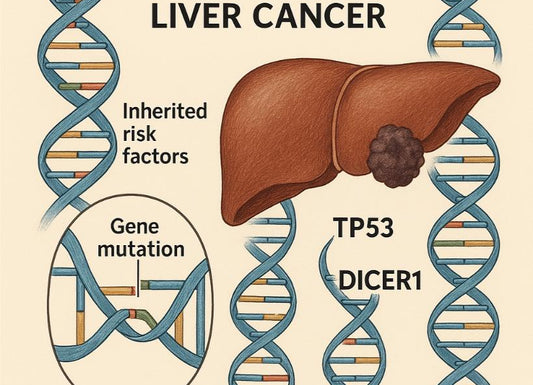Why Is My Blood Sugar High After Exercise with Type 2 Diabetes?
 Written By
Abel Tamirat, MD
Written By
Abel Tamirat, MD

Exercise is one of the best lifestyle strategies for managing type 2 diabetes. It helps lower blood sugar, improve insulin sensitivity, boost cardiovascular health, and support weight management. Yet many people are surprised and sometimes concerned when their blood sugar levels rise instead of fall after working out. If you’ve ever asked yourself, “Why is my blood sugar high after exercise with type 2 diabetes?”, you are not alone.
This article explores why this happens, the science behind blood sugar fluctuations, whether you should be concerned, and practical strategies to manage your levels. Written in a clear, supportive style, it draws from clinical insights while staying patient-friendly.
Understanding Blood Sugar and Exercise
How Exercise Affects Blood Sugar
When you exercise, your muscles demand extra energy. Your body supplies this by using glucose from your bloodstream along with glycogen stored in muscles and the liver. This typically lowers blood sugar, one of the reasons exercise is prescribed for people with type 2 diabetes.
Why Blood Sugar Sometimes Rises Instead
However, exercise is also a stressor. During vigorous activity, stress hormones like adrenaline and cortisol are released. These hormones trigger the liver to release glucose into the blood for additional fuel. In people with type 2 diabetes, insulin resistance can make it harder for the body to move this glucose into the muscles efficiently, leading to a temporary rise in blood sugar.
Common Causes of High Blood Sugar After Exercise

1. Intense or Anaerobic Workouts
Short bursts of high-intensity activity sprinting, interval training, or heavy weightlifting are more likely to cause spikes. These activities rely heavily on glycogen and trigger strong hormone responses.
2. Reduced Insulin Sensitivity
Insulin resistance is a hallmark of type 2 diabetes. Even though exercise improves insulin sensitivity over time, immediately following intense activity, the body may not use insulin efficiently enough to clear the extra glucose.
3. Timing of Meals and Snacks
Eating a carbohydrate-rich meal or snack before exercise can raise blood sugar. When combined with the liver’s glucose release, this may amplify spikes.
4. Dehydration
Sweating during exercise can cause fluid loss. Dehydration concentrates glucose in the blood, making readings appear higher.
5. Individual Hormonal Response
Some people naturally release more stress hormones during activity, creating bigger swings in blood sugar.
Types of Exercise and Their Effects
Aerobic (Cardio) Exercise
Activities like walking, swimming, or cycling usually lower blood sugar steadily because they use glucose continuously.
Anaerobic (High-Intensity) Exercise
Short bursts of effort, such as sprinting or heavy resistance training, may cause temporary spikes due to liver glucose release.
Mixed Exercise
Sports such as basketball or soccer involve both aerobic and anaerobic components. Blood sugar responses vary and may be unpredictable.
Should You Be Concerned About Post-Exercise Highs?
For most people, these spikes are short-lived and not dangerous. Over the long term, consistent physical activity helps lower average blood sugar, improve A1C, and strengthen cardiovascular health.
It is important to focus on trends, not isolated readings. Occasional post-exercise spikes are usually outweighed by the broad health benefits of staying active.
Strategies to Manage Blood Sugar After Exercise
1. Monitor Your Blood Sugar
Check your glucose levels before and after activity. A continuous glucose monitor (CGM) can provide detailed patterns.
2. Adjust Exercise Intensity
If you notice spikes after high-intensity sessions, try lowering intensity or mixing in moderate aerobic activities such as brisk walking.
3. Time Your Workouts
Some people find exercising a couple of hours after meals helps keep blood sugar steadier.
4. Stay Hydrated
Drink water before, during, and after exercise to prevent dehydration-related spikes.
5. Balance Nutrition
Pair carbohydrates with protein or healthy fats before workouts to prevent rapid glucose absorption. Avoid high-sugar snacks unless treating low blood sugar.
6. Work with Your Care Team
If spikes are consistent, your provider may suggest adjusting medication timing, dosage, or workout style.
Long-Term Benefits of Exercise Despite Short-Term Spikes

-
Improved insulin sensitivity: Regular activity helps muscles use insulin more efficiently.
-
Lower A1C: Consistent exercise reduces average blood sugar over time.
-
Heart health: Exercise lowers blood pressure and cholesterol.
-
Weight management: Physical activity supports healthy body weight.
-
Mental well-being: Activity boosts mood, reduces stress, and improves sleep.
Even if blood sugar rises briefly, exercise remains one of the most powerful tools for diabetes management.
Practical Tips from Diabetes Specialists

-
Begin gradually if you’re new to exercise.
-
Mix cardio with resistance training throughout the week.
-
Carry glucose tablets if you take insulin or other medications that may lower blood sugar.
-
Keep an exercise and glucose log to identify patterns.
When to Seek Medical Advice
Call your healthcare provider if:
-
Blood sugar consistently rises above 300 mg/dL after workouts.
-
You experience dizziness, nausea, or faintness post-exercise.
-
Spikes happen frequently with other symptoms like thirst or fatigue.
Takeaway
Seeing high blood sugar after workouts can feel discouraging, but it’s usually a temporary and normal response to exercise-related hormones. For people with type 2 diabetes, insulin resistance makes these spikes more noticeable.
The important point is that exercise even with occasional highs improves overall health, lowers A1C, and supports long-term diabetes management. By monitoring your levels, adjusting workout intensity, staying hydrated, and working with your care team, you can make exercise safe and effective.
Exercise should remain a cornerstone of your diabetes care plan. Stay active, track your patterns, and view post-exercise highs as part of your body’s natural response not a reason to stop moving.
Related Resources
Looking for more support in managing diabetes and exercise? Explore these guides:
-
Blood sugar monitoring in diabetes: start checking regularly – Practical tips for daily tracking.
-
Understanding fasting glucose levels – Learn what healthy ranges look like.
-
Type 2 diabetes and exercise benefits – Why movement matters for blood sugar balance.
References
Adams, P. (2013). The impact of brief high-intensity exercise on blood glucose levels. Diabetes, Metabolic Syndrome and Obesity: Targets and Therapy, 113. https://doi.org/10.2147/dmso.s29222
Blood Glucose and Exercise: Managing Post-Exercise Hyperglycemia & Glucose Spikes. (2025). Diabetes.org. https://diabetes.org/health-wellness/fitness/why-does-exercise-sometimes-raise-blood-sugar#:~:text=But%20you%20might%20see%20blood,your%20liver%20to%20release%20glucose.
Colberg, S. R., Sigal, R. J., Yardley, J. E., Riddell, M. C., Dunstan, D. W., Dempsey, P. C., Horton, E. S., Castorino, K., & Tate, D. F. (2016). Physical Activity/Exercise and Diabetes: A Position Statement of the American Diabetes Association. Diabetes Care, 39(11), 2065–2079. https://doi.org/10.2337/dc16-1728
Cornejo, C. (2021, October 5). Why Does Exercise Sometimes Make Your Blood Sugar Spike? Healthline; Healthline Media. https://www.healthline.com/health/why-does-exercise-sometimes-raise-your-blood-sugar
Diabetes and exercise: When to monitor your blood sugar. (2025). Mayo Clinic. https://www.mayoclinic.org/diseases-conditions/diabetes/in-depth/diabetes-and-exercise/art-20045697

Dr. Abel Tamirat is a licensed General Practitioner and ECFMG-certified international medical graduate with over three years of experience supporting U.S.-based telehealth and primary care practices. As a freelance medical writer and Virtual Clinical Support Specialist, he blends frontline clinical expertise with a passion for health technology and evidence-based content. He is also a contributor to Continuing Medical Education (CME) programs.



